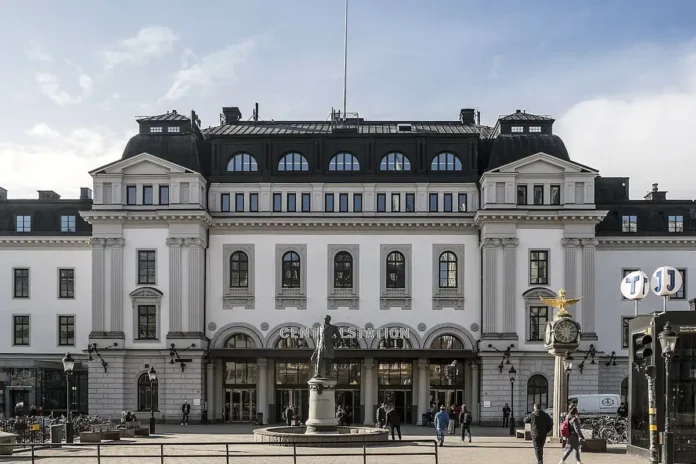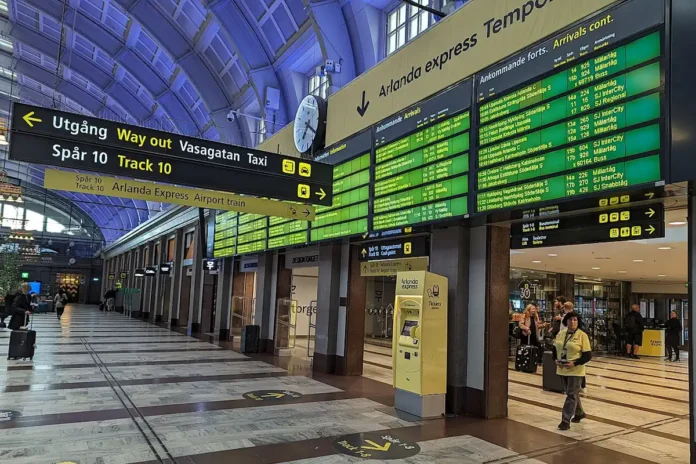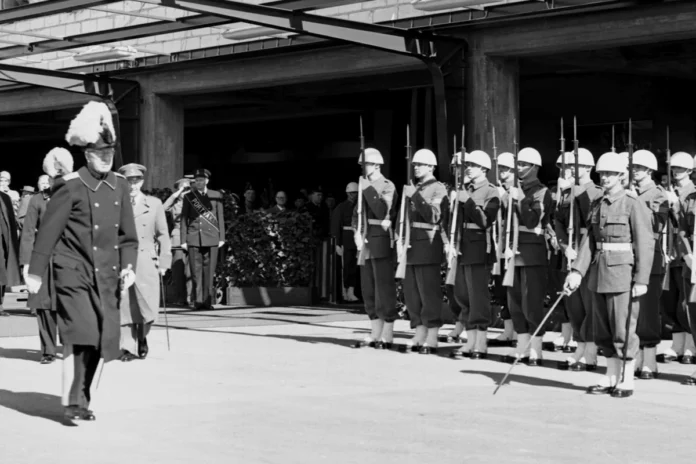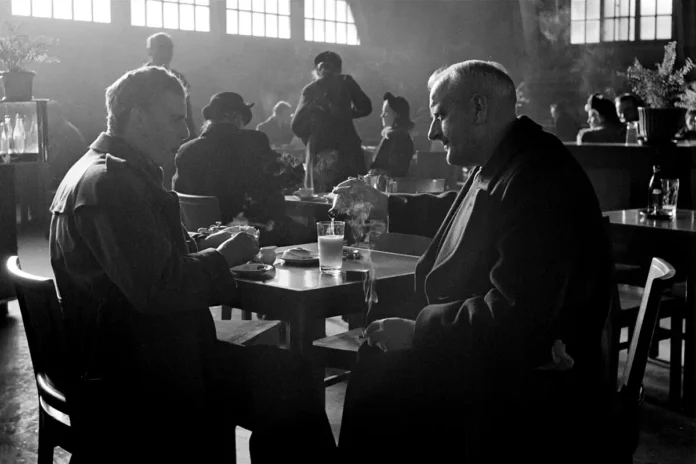Located in the heart of Stockholm, Stockholm Central Station (Stockholms centralstation) stands as a testament to both architectural grandeur and modern functionality.
This iconic landmark, serving over 250,000 passengers daily, is not just Sweden’s busiest railway station but a destination in itself.
Navigating the station
Even though it has a relatively complicated layout, Stockholm Central Station is designed to be easy to navigate:
- Main entrance: Located on Vasagatan, it leads to the main concourse and nearby taxi ranks.
- Metro connection: The lower level provides direct access to T-Centralen, the convergence point of all Stockholm metro lines.
- Digital assistance: Clear signage and electronic boards throughout the station guide travelers efficiently.
A journey through time
Designed by the renowned architect Adolf W. Edelsvärd, Stockholm Central Station opened its doors on July 18, 1871. Over the years, it has undergone significant transformations:
- 1925-1928: A major renovation led by architect Folke Zettervall added the impressive central hall, measuring 119 meters long, 28 meters wide, and 13 meters high.
- 1951: The Vasagatan facade was simplified, giving the station a more modern look.
- 1958: An underground passage connected the station to T-Centralen, integrating it with Stockholm’s metro system.
- 2017: The adjacent Stockholm City Station opened, taking over commuter train operations and allowing for expanded regional and long-distance services at Central Station.
Beyond transportation: A destination in itself
Stockholm Central Station is not just a transportation hub; it’s a vibrant destination offering a wide range of amenities to enhance your travel experience. Within the station, you’ll find a diverse selection of dining options, from quick snacks to full meals at various cafes and restaurants. The atmosphere is enriched by stunning artwork and displays that provide a glimpse into Swedish culture and heritage.
For practical convenience, the station features luggage storage facilities, paid bathrooms, and complimentary Wi-Fi. This facility ensures that travelers have everything they need while waiting for their trains or exploring the city. Whether you’re grabbing a bite, admiring the local art, or simply enjoying the free internet, Stockholm Central Station is designed to make your journey as comfortable and enjoyable as possible.
Gateway to Stockholm’s attractions
Because of its geographic location in the heart of the city, the station is an excellent place to begin exploring the city:
Stockholm City Hall
Only an 11-minute walk from Stockholm Central Station, City Hall is a stunning example of Nordic architecture and a popular spot for guided tours and events. In essence, its picturesque location by Lake Mälaren offers beautiful views and photo opportunities.
Gamla Stan
Just a short walk away, this historic Old Town charms visitors with its cobblestone streets and colorful buildings.
Royal Palace
Easily accessible from the station, it’s a must-visit for history enthusiasts.








